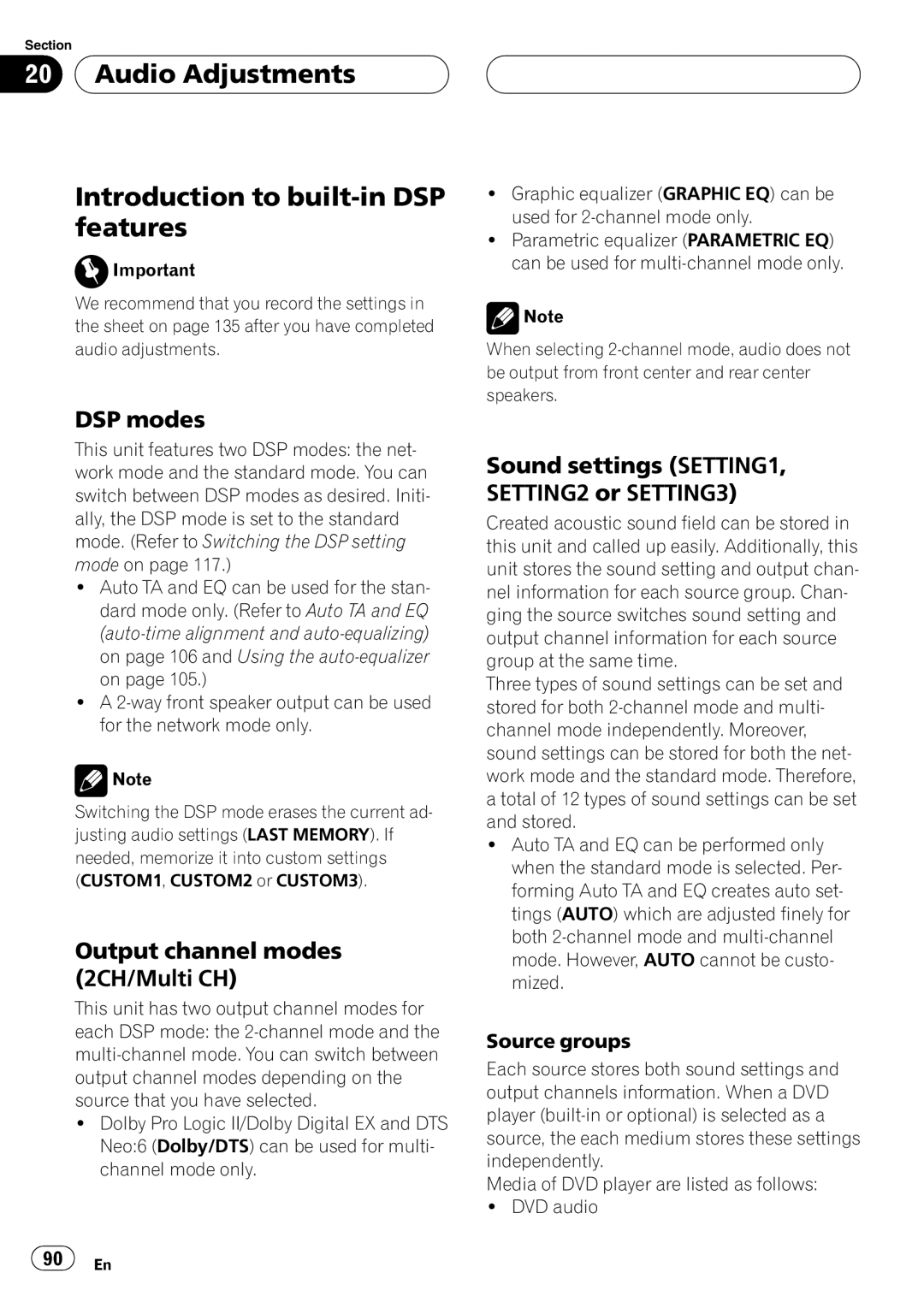
Section
20  Audio Adjustments
Audio Adjustments
Introduction to built-in DSP features
![]() Important
Important
We recommend that you record the settings in the sheet on page 135 after you have completed audio adjustments.
DSP modes
This unit features two DSP modes: the net- work mode and the standard mode. You can switch between DSP modes as desired. Initi- ally, the DSP mode is set to the standard mode. (Refer to Switching the DSP setting mode on page 117.)
!Auto TA and EQ can be used for the stan- dard mode only. (Refer to Auto TA and EQ
!A
![]() Note
Note
Switching the DSP mode erases the current ad- justing audio settings (LAST MEMORY). If needed, memorize it into custom settings (CUSTOM1, CUSTOM2 or CUSTOM3).
Output channel modes (2CH/Multi CH)
This unit has two output channel modes for each DSP mode: the
!Dolby Pro Logic II/Dolby Digital EX and DTS Neo:6 (Dolby/DTS) can be used for multi- channel mode only.
!Graphic equalizer (GRAPHIC EQ) can be used for
!Parametric equalizer (PARAMETRIC EQ) can be used for
![]() Note
Note
When selecting
Sound settings (SETTING1, SETTING2 or SETTING3)
Created acoustic sound field can be stored in this unit and called up easily. Additionally, this unit stores the sound setting and output chan- nel information for each source group. Chan- ging the source switches sound setting and output channel information for each source group at the same time.
Three types of sound settings can be set and stored for both
!Auto TA and EQ can be performed only when the standard mode is selected. Per- forming Auto TA and EQ creates auto set- tings (AUTO) which are adjusted finely for both
Source groups
Each source stores both sound settings and output channels information. When a DVD player
Media of DVD player are listed as follows:
!DVD audio
![]() 90
90![]() En
En
